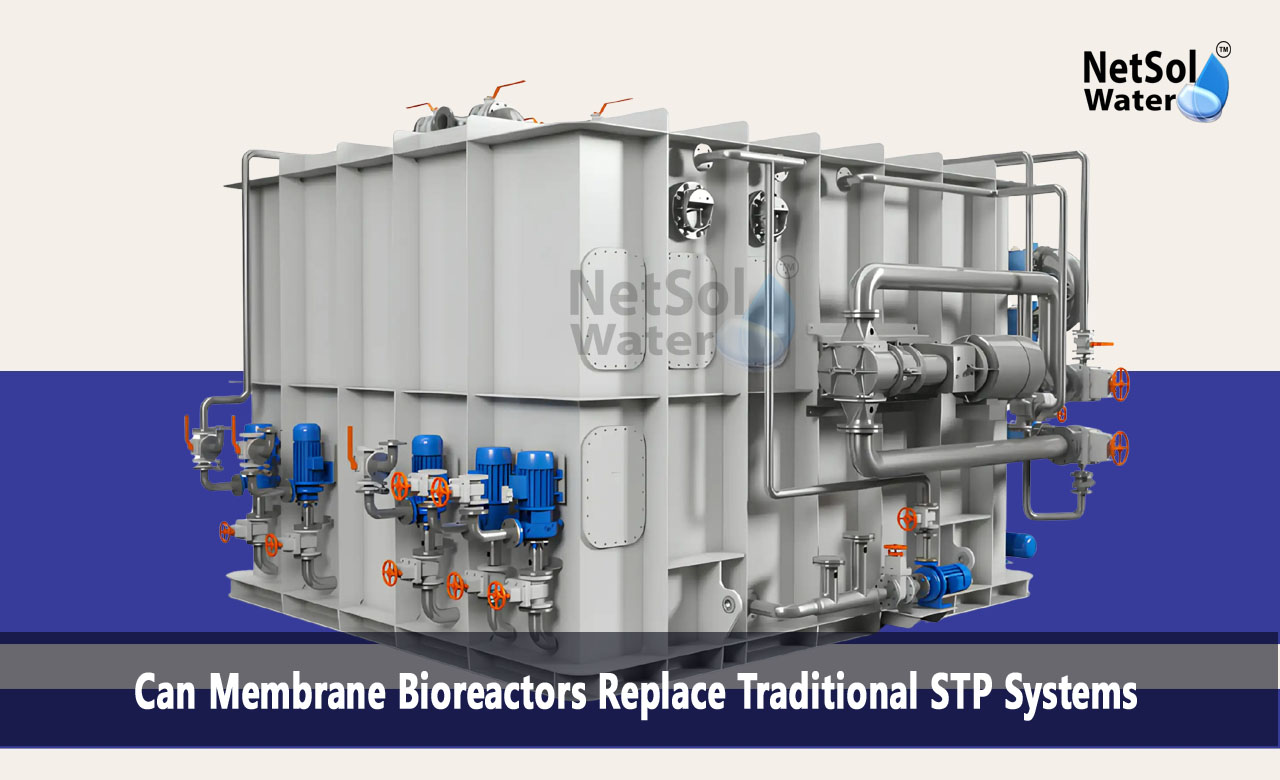Can MBR Replace Traditional STP Systems?
Netsol Water stands as a leading sewage treatment plant manufacturer in water treatment solutions today. The company delivers reliable systems that meet modern demands and drive innovation across industries.To treat wastewater and protect natural resources, engineers have turned to new methods and fresh technology. Membrane Bioreactors offer strong performance in a compact design and present a real chance to move beyond older methods. We will explore whether Membrane Bioreactors can replace Traditional STP Systems.
Efficiency and Treatment Quality
Effective wastewater treatment lies at the centre of any system choice. High removal rates and stable outcomes keep water safe and meet strict standards. Let us have a look at some key factors that define performance in this area.
Treatment Removal Rates
Membrane Bioreactors deliver strong solids separation and high removal of organic matter. In contrast Traditional STP Systems rely on settling tanks that need large areas to match the same removal levels. The tighter control in a bioreactor lets operators reach better results with less space.
Effluent Quality
Plants must meet tight discharge standards for reuse or release into nature. Membrane Bioreactors produce clear water with low turbidity and consistent composition. Traditional STP Systems may show variation after heavy loads or weather shifts. This makes MBR systems more reliable when quality matters most.
Biomass Retention
Biomass drives the breakdown of waste in any biological system. Membrane Bioreactors trap the biomass within the reactor so it works longer before removal. In traditional designs the biomass often passes out with the treated water and needs constant replacement. The retention in MBR leads to stable performance and less waste.
Space and Footprint Savings
Urban sites face limits on area for new plants. Systems that use less land win in city and industrial zones. Let us have a look at some ways that footprint needs change with each design.
Compact Reactor Design
Membrane Bioreactors merge biological treatment and separation in one tank. This cut in equipment lets designers shrink the system by half or more. Traditional STP Systems need separate settling and reaction zones that demand wide layouts.
Modular Installation
Many MBR units come as modules that installers stack or link along a line. This choice gives project teams the freedom to place each block in tight spots or adapt to odd shapes. Traditional STP Systems offer less modularity and more rigid layout rules.
Civil Work Reduction
Reduced tank sizes and fewer channels mean less concrete work and fewer trenches. This lowers site disruption and speeds up project schedules. Traditional STP Systems often need deep pits for settling that raise costs and extend build time.
Operational and Maintenance Aspects
Smooth daily operation and easy upkeep affect the total cost of a plant. Systems that demand less work let teams focus on core tasks. Let us have a look at some maintenance drivers in each approach.
Energy Consumption
Membrane Bioreactors need energy to push water through filters but they do this at low pressure. Many designs run pumps at steady settings and avoid spikes. Traditional STP Systems use blowers and mixers that drive big pumps in cycles and raise power bills.
Membrane Cleaning
Keeping membranes clear proves essential in MBR plants. Netsol Water fits advanced backflush systems that rinse fouling on set schedules without stopping the plant. Operators may find this work lighter than the sludge handling and tank cleaning common in Traditional STP Systems.
Spare Parts and Wear
Membranes need replacement over years but change intervals stretch out past a decade in many cases. Pumps and blowers run at steady speeds and parts last longer. Traditional STP Systems often face more wear on mixing blades and desludging gear that needs service more often.
Cost and Return on Investment
Capital and operating expenses shape any adoption choice. A system that pays back quickly draws more interest in new projects. Let us have a look at some cost elements that each option brings.
Capital Expenditure
Membrane Bioreactors require a higher upfront spend for modules and membranes. Yet the cut in civil work and shorter build time can bring net savings. Traditional STP Systems may look cheaper to start but they often carry hidden site costs and longer delivery schedules.
Operating Costs
Energy savings in a well tuned MBR offset the cleaning cycles and membrane upkeep. Lower land rent and lean civil work add to the gains. Traditional STP Systems tend to cost more over years in power and manpower.
Payback Period
When factoring land savings, shorter build time and stable running costs into a plan owners often see a return on Membrane Bioreactors in three to five years. Traditional STP Systems can stretch the payback beyond a decade in some cases making the newer choice more appealing.
Conclusion
Can Membrane Bioreactors replace Traditional STP Systems in your next project? Netsol Water shows how these systems deliver higher quality and space savings while keeping running costs in check. Netsol Water guides each step from design through startup to help you see fast payback. If you want to learn more or request a custom consultation reach out today and discover how Membrane Bioreactors can shape your future water treatment goals.
Contact Netsol Water at:
Phone: +91-9650608473, Email: enquiry@netsolwater.com



